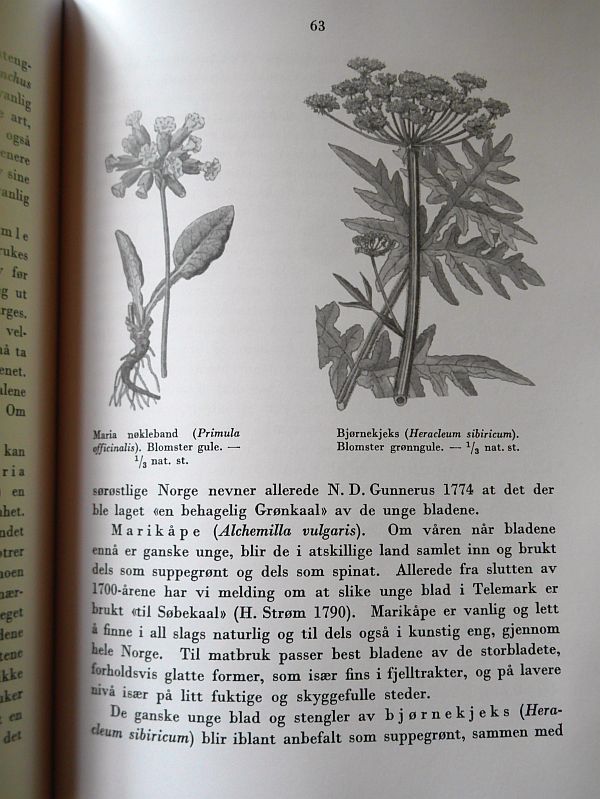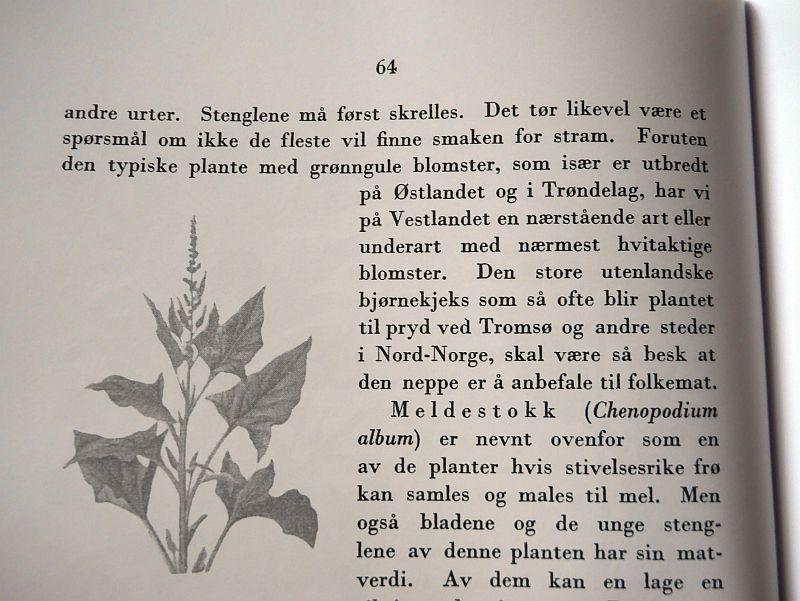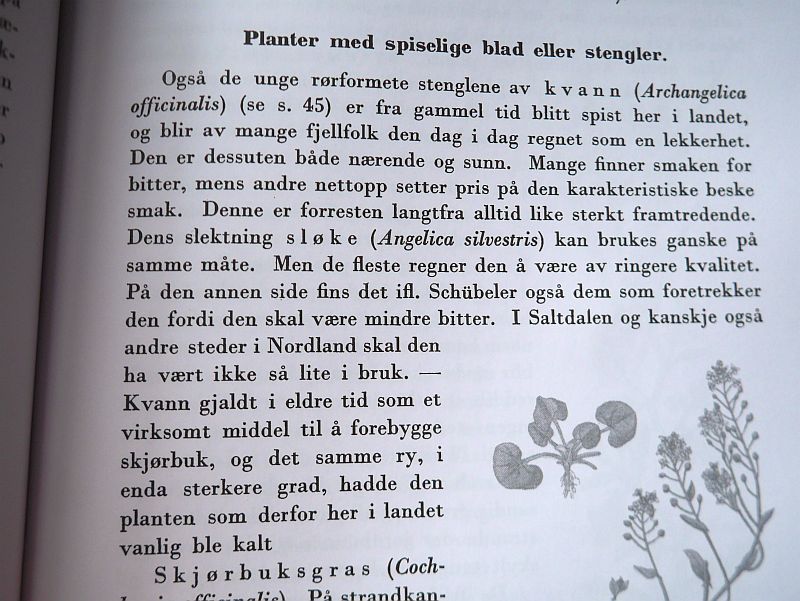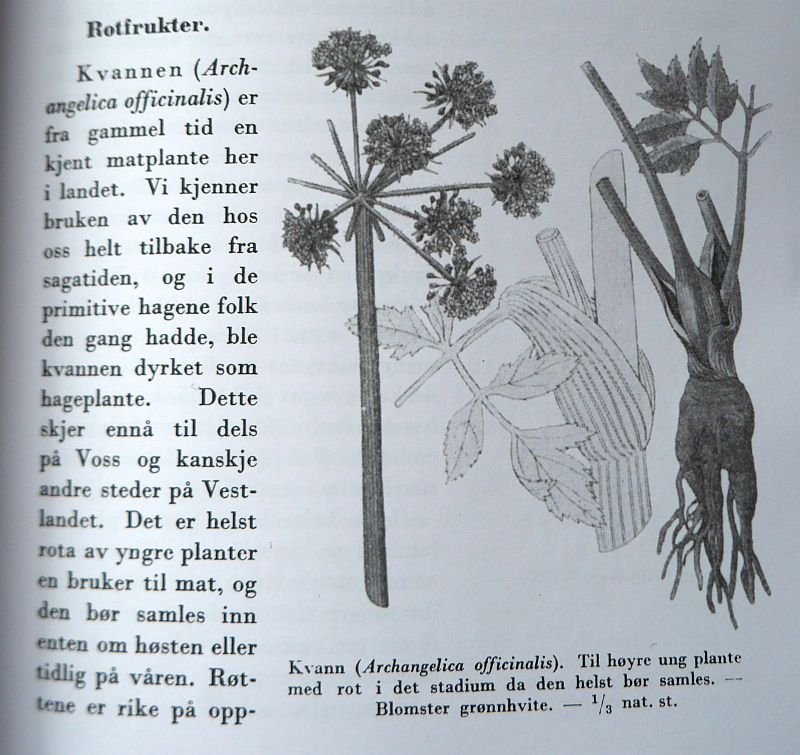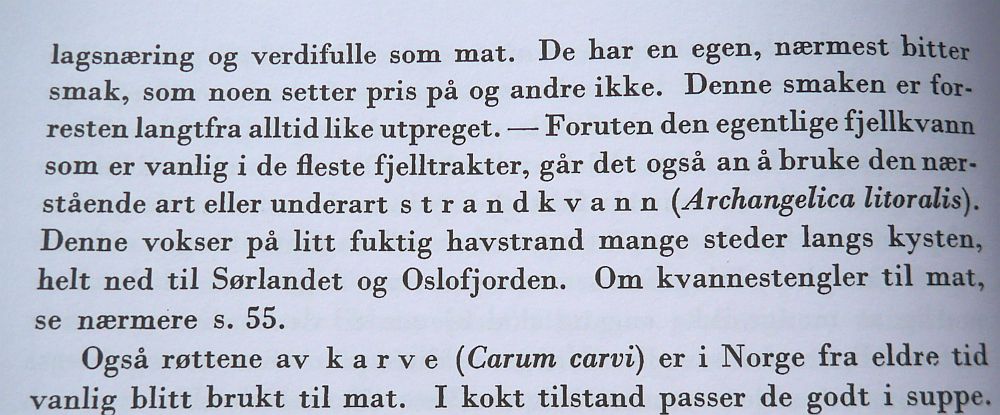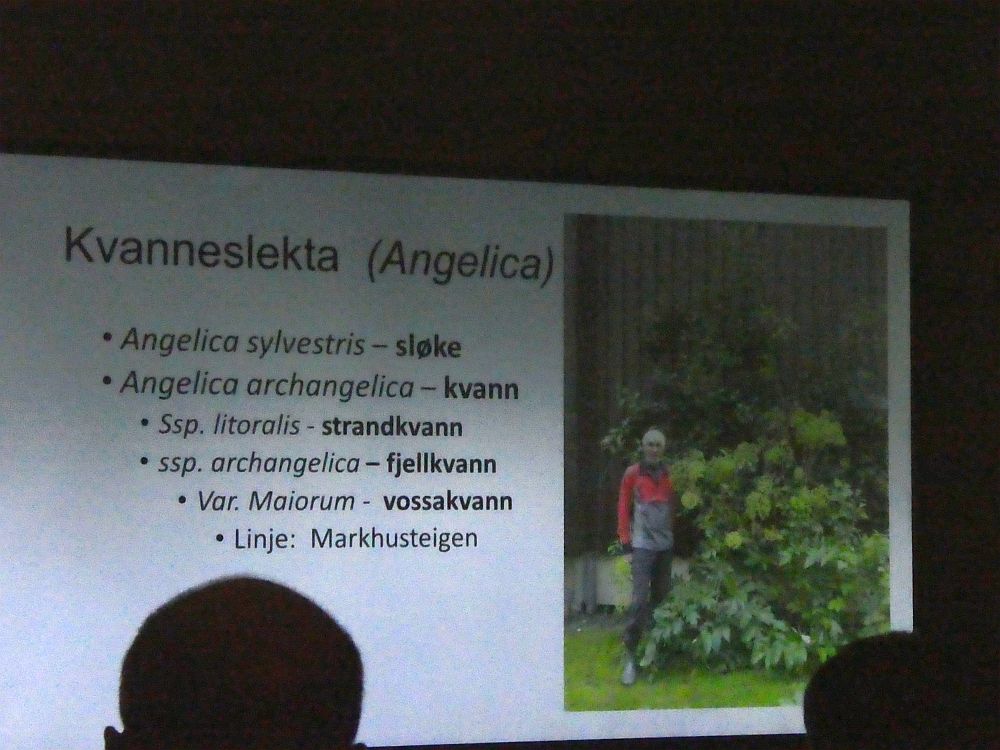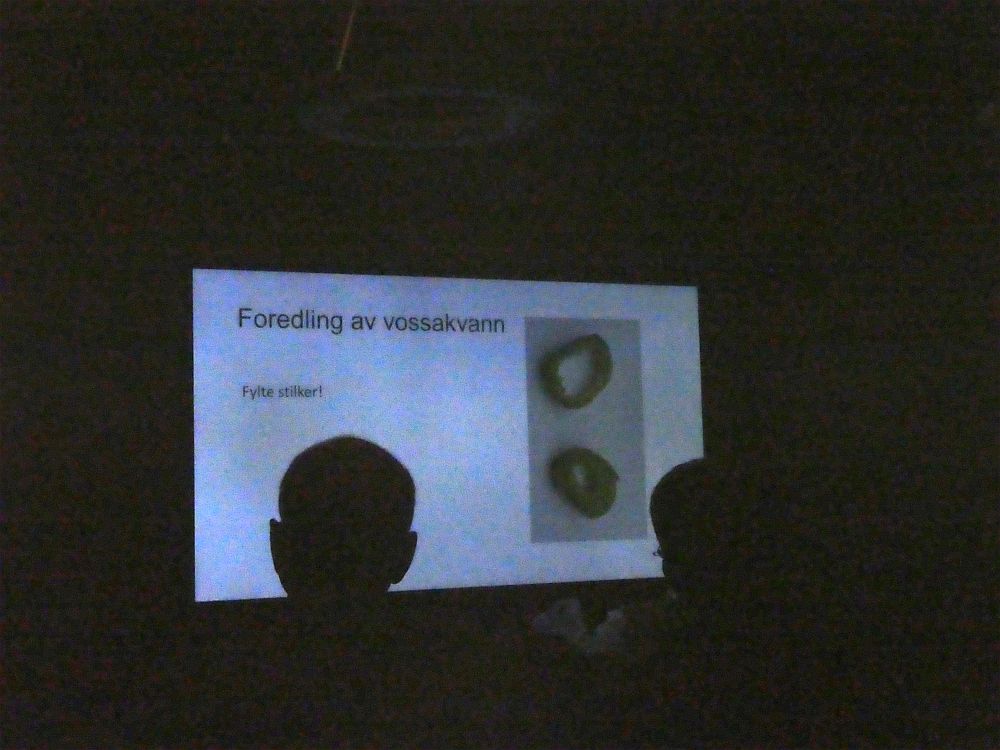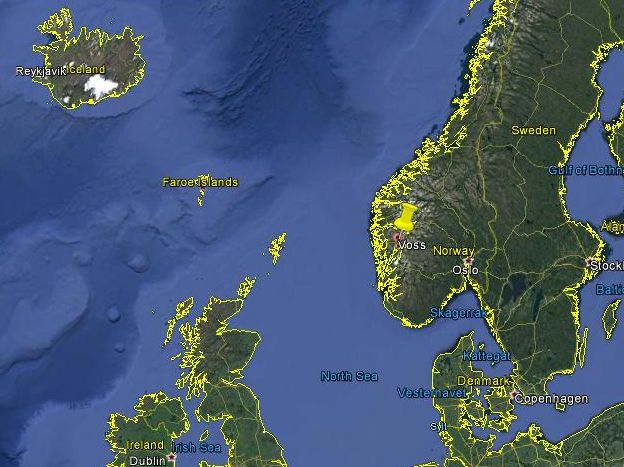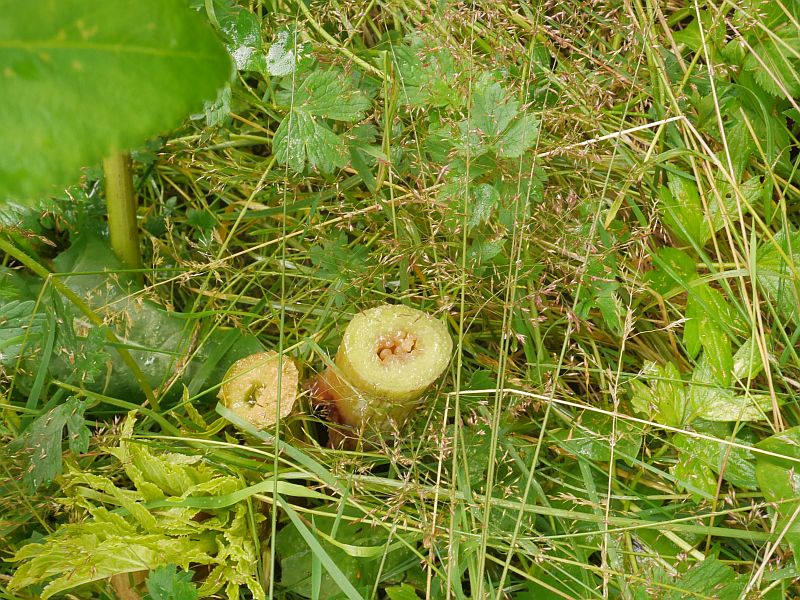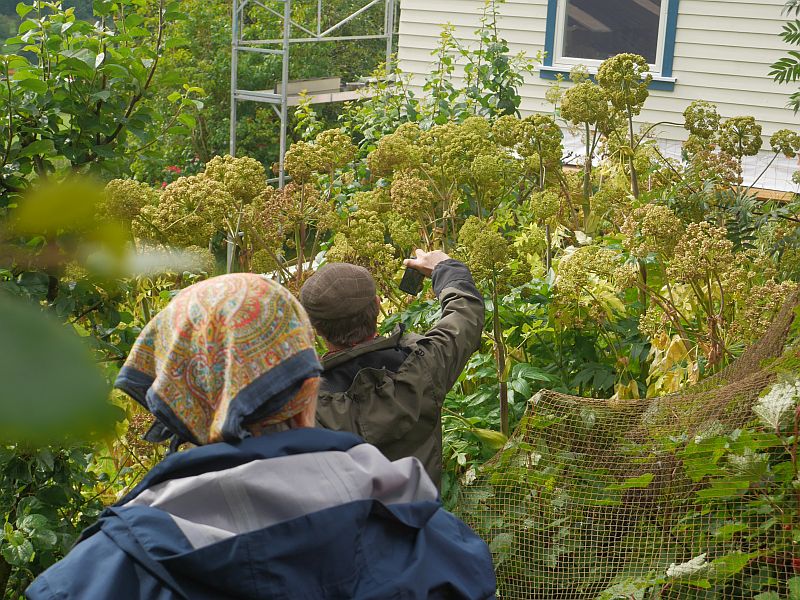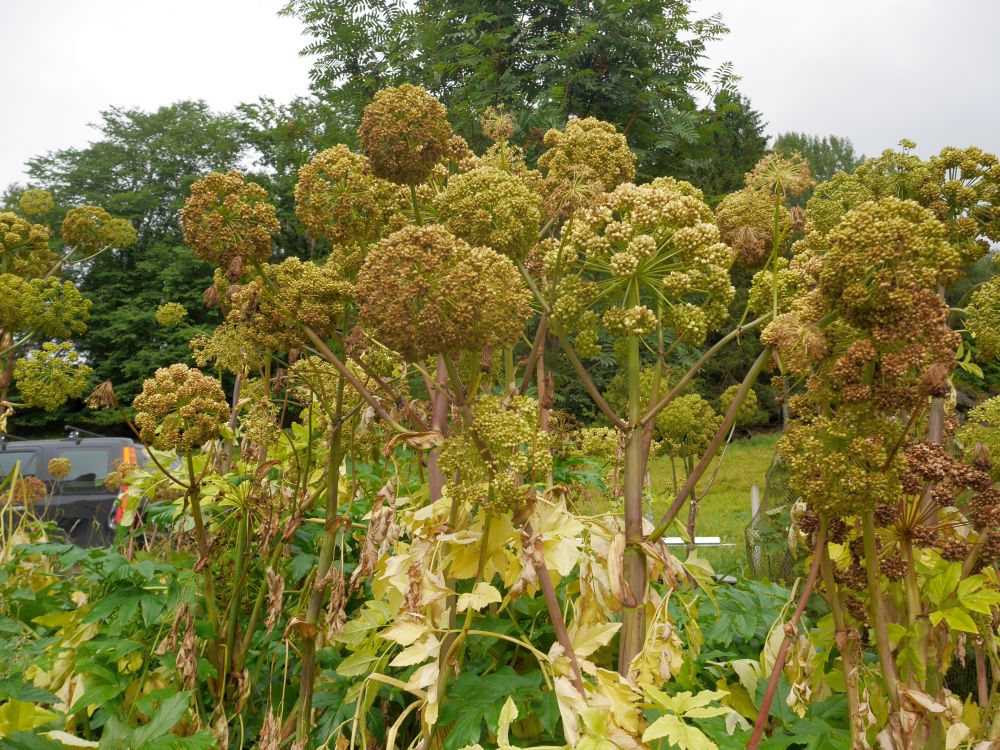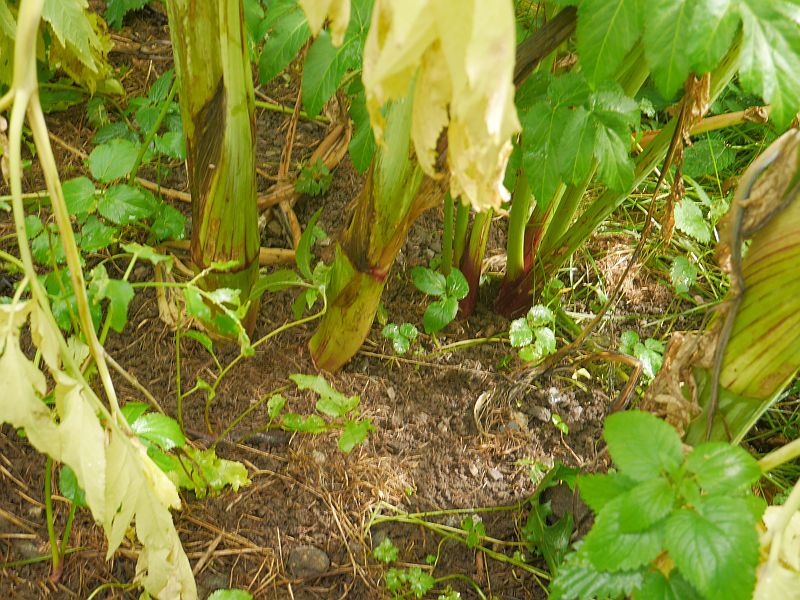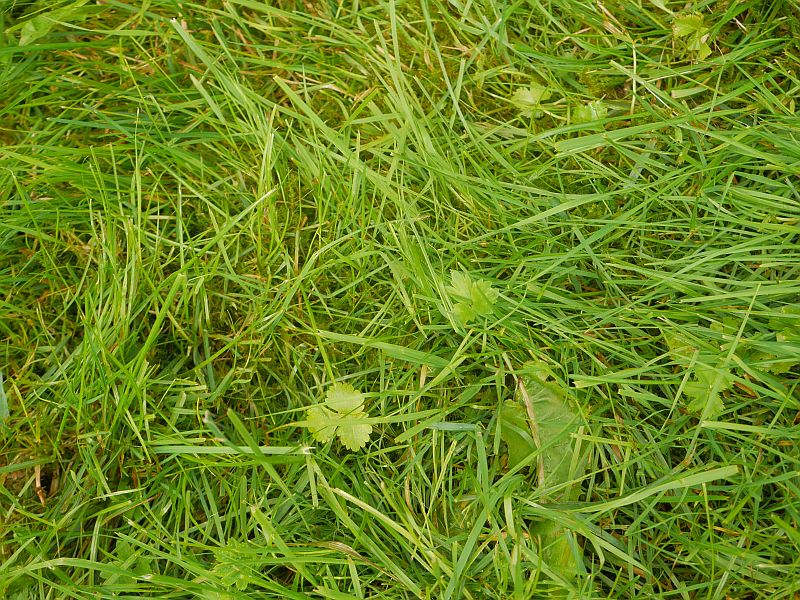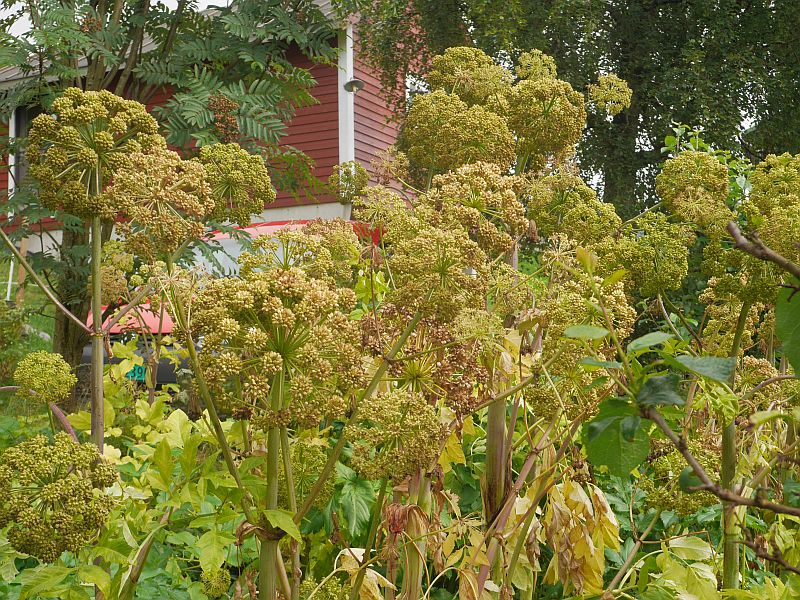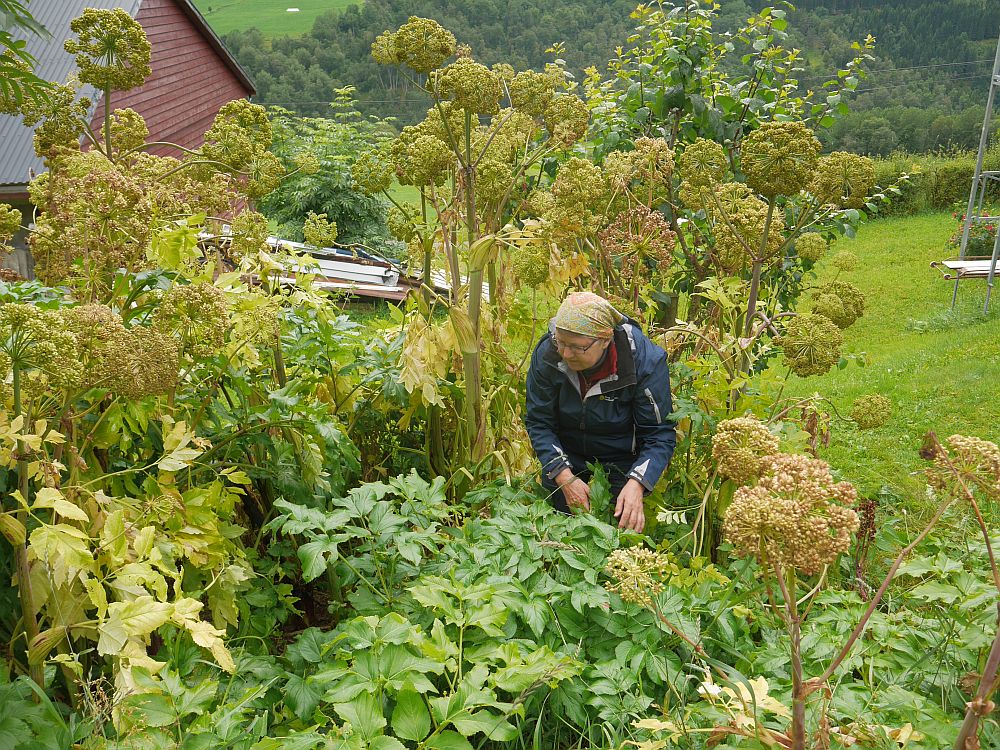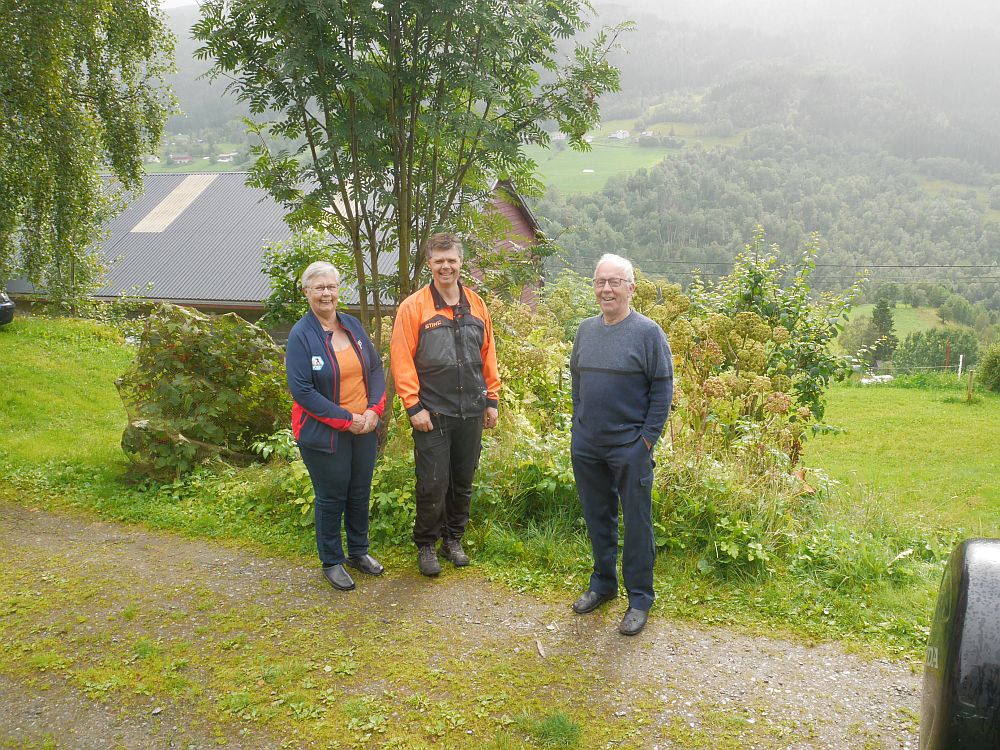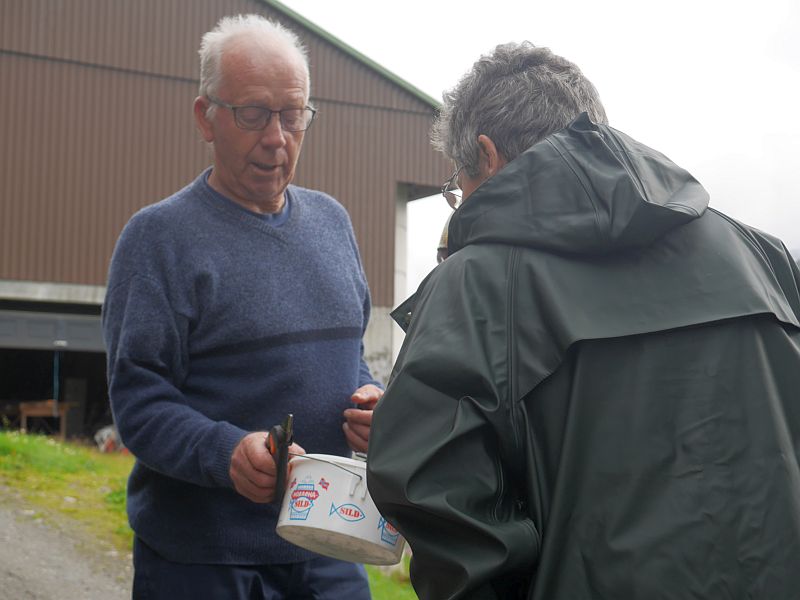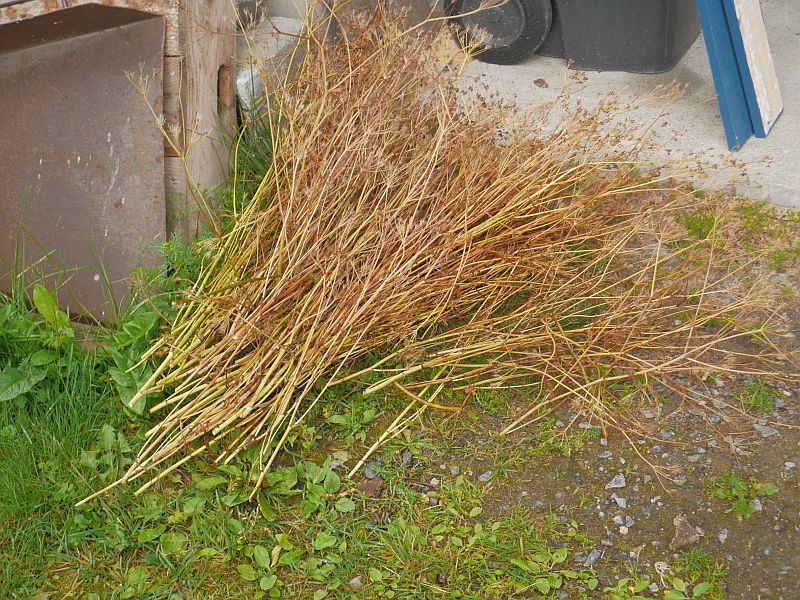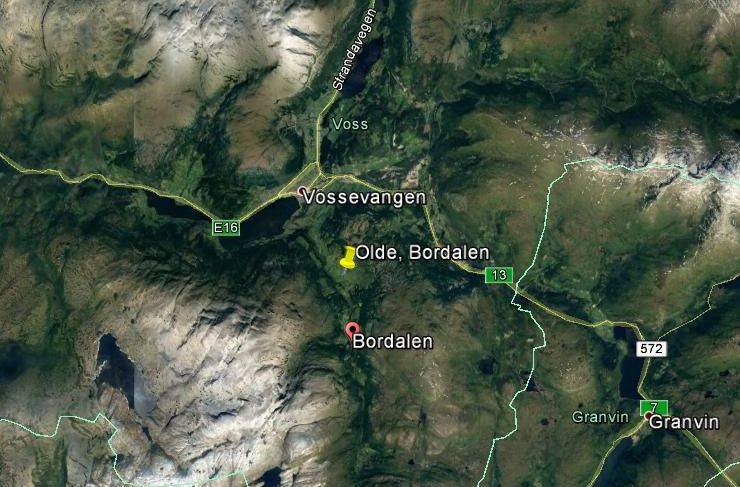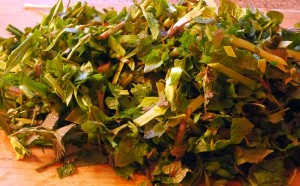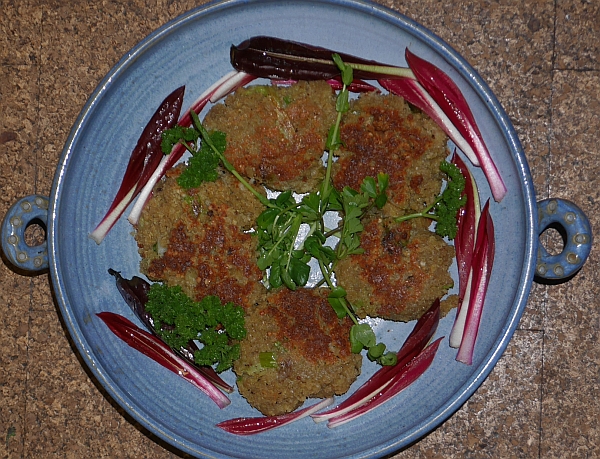My latest book has been published on Monday (with 199 co-authors 😉 ). This is the 300 page Arctic Encyclopaedia and the good news is that it can be downloaded for free at ARCTIC ENCYCLOPAEDIA.
The book explores a wide array of themes—from adventure, aquaculture, food production as well as mining, myths and mental health—with entries spanning the letters A to Ø. Each contributor was assigned a word to define in under 350 words through a short text, poem, photograph, or drawing. My word was GARDEN! You can read my contribution in the picture.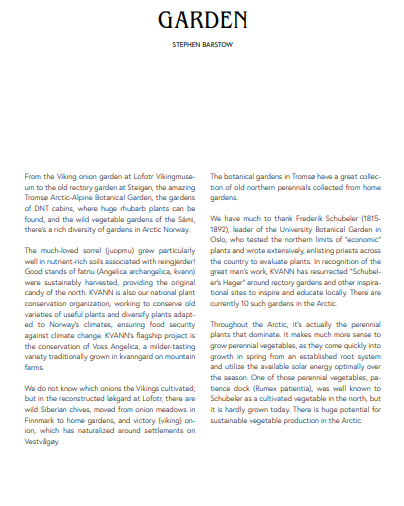
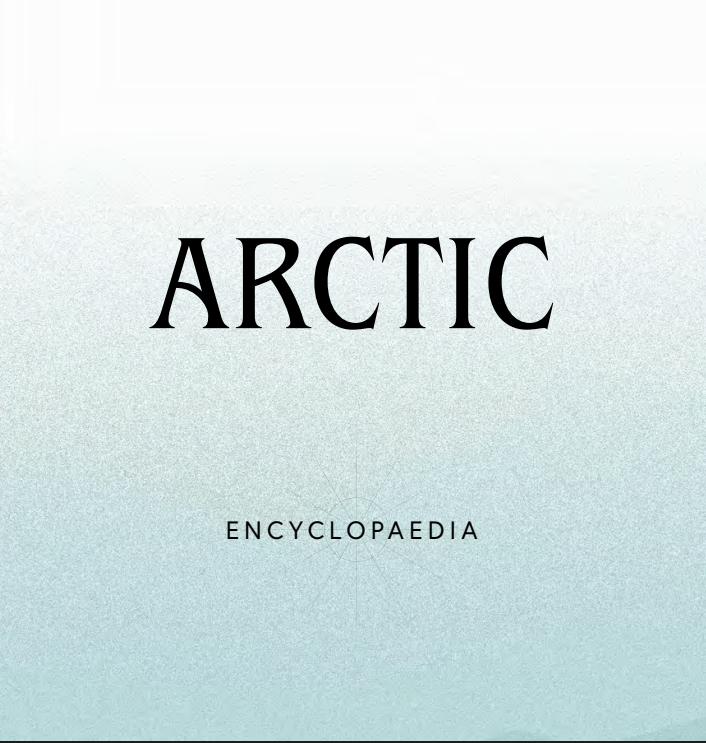
Tag Archives: Angelica archangelica
27th March Veggies from the garden
Tonight we made a quiche (eggepai) with these vegetables:
Allium nutans (Siberian nodding onion)
Allium cernuum (nodding onion / prærieløk)
Dystaenia takesimana (Giant Ulleung Celery)
Brassica oleracea (Perennial kale / flerårige kål)
Allium paradoxum
Allium oleraceum
Alliaria petiolata (hedge garlic / løkurt)
Angelica archangelica (Voss Angelica / Vossakvann)
Myrrhis odorata (Sweet cicely / spansk kjørvel)
Tragopogon pratensis shoots ( Jack-go-to-bed-at-noon / geitskjegg)
Carum carvi (caraway / karve)
Aegopodium podograria (ground elder / skvallerkål)
Hablitzia tamnoides (Caucasian spinach / stjernemelde)
Taraxacum officinale (dandelion / løvetann)
Rumex acetosa (sorrel / engsyre)
Smyrnium olusatrum (Alexanders / sorte løpstikke)
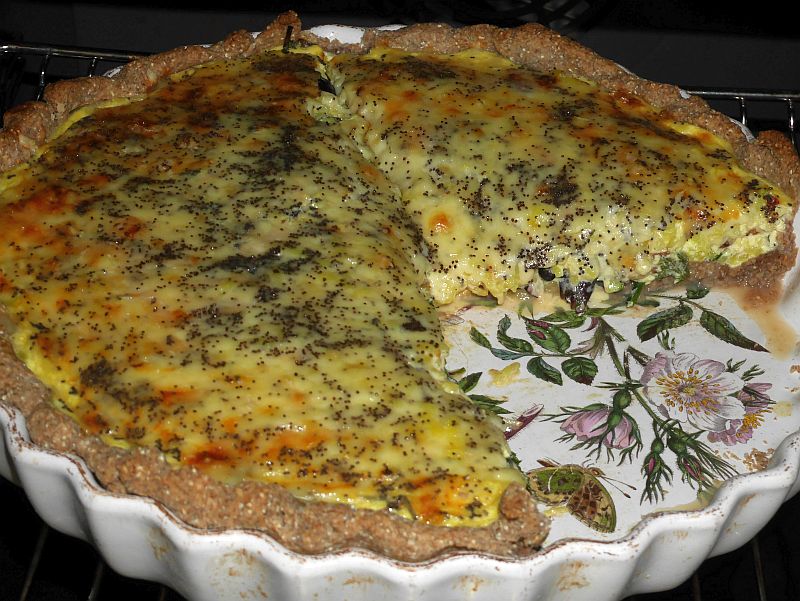
Holmboe’s Gratis mat av ville planter
Jens Holmboe’s book “Gratis mat av ville planter” (Free food from wild plants) from 1941 is still my favourite Norwegian book on wild food as it is well researched and includes a number of interesting anecdotes. I’ve had a photocopy of the whole book for many years (I think I borrowed it from my friend Jan Erik Kofoed and copied it at work in the 1980s). I finally own a copy of the book from the 2016 reprint! It had somehow passed me by that it was available! Thanks to Hanne Edvardsen from Trondheim Nyttevekstforening who gave me a copy at the recent Ringve Botanical Garden Open Day!
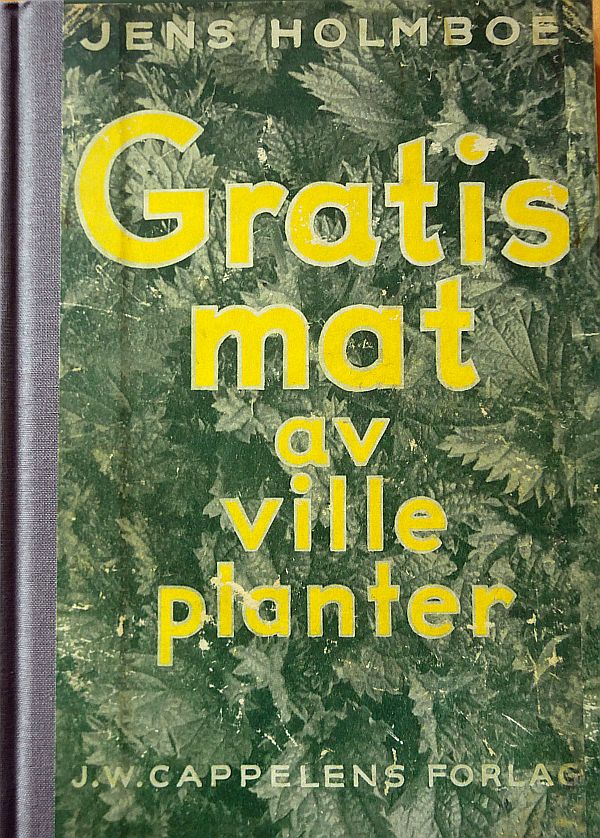
Interestingly, it does include the hogweeds / bjørnekjeks (Heracleum) including giant Tromsøpalme (Heracleum persicum, source of the spice golpar and a vegetable in Iran). However, I don’t think he could have tasted the latter when he wrote: “….skal være så besk at den neppe er å anbefale til folkemat” (…is apparently so bitter that it can hardly be recommended as food). Similarly, he mentions that Heracleum sibiricum is sometimes recommended for soups , together with other herbs….and it is likely to be too strong tasting for most people.
He writes about kvann (Angelica archangelica) as a wel known food plant in Norway right back to the time of the Vikings. He talks about it still being cultivated in Voss (and perhaps other places in western Norway). He encourages the use of roots as a nutritous food and indicates that some people like their bitter taste, others not. Unlike some books he also says that the subspecies litoralis (found on the coast of Norway) can also be used. He also says that Angelica sylvestris is much used in northern Norway and that it is less bitter!
Buy the book for kr. 250 plus postage by ordering through
sbarstow2@gmail.com
Payment either by Paypal, bank transfer or VIPPS (Norway). Please remember your address!
Kvann foredrag i Trondheim
Etter foredraget begynte møtelederen faktisk å fortelle forsamlingen om at det var til og med dannet en forening KVANN…før jeg kunne fortelle dette selv… Jeg kunne derfor sto opp og fortelle at jeg var faktisk KVANNs leder og jeg fortalte litt om oss….
Her er hele foredrag til Ingerid:
KVANN-2017.11.11a
Kvannsafari to Olde in Bordalen
Kvann is Norwegian Mountain Angelica, Angelica archangelica ssp. archangelica, one of the most important plants in Norwegian history, used as a vegetable back to the times of the Vikings and an important exported medicinal herb in the past. It was a very important vegetable of the Sami people! In my book “Around the World in 80 plants”, I tell the story of a special form of kvann, known as Vossakvann, traditionally cultivated in special Kvann-yards (kvannagard) on the farms in this area. A good historical review of this plant can be found in Ove Fosså’s paper (see below) and, in Norwegian, please search for Vossakvann on Norwegian Seed Savers web site, http://kvann.no).
The aim of our trip was to visit one of the last farms still growing Vossakvann, Olde in Bordalen. Vossakvann has almost filled (solid) leaf and flower stalks whilst wild plants are hollow …in other words, there’s more “flesh”… It is also milder tasting, perhaps because there’s more flesh, the plant producing the same amount of bitter substances which are spread over a larger volume?
Jorunn Ringheim Hernes, who had recently retired from Landbruksrådgivning (the agricultural advisory service) in Voss, had arranged with the farmer, Knut Arvid Olde, to visit. Some years ago, Jorunn had sent me a couple of plants from a different line of Vossakvann, Elgje. Sadly, this line had recently been lost due to the seed not germinating. Further, a third line at Markusteigen has almost disappeared locally due to the fact that the kvannagard had not been looked after (repeatedly cut down) and only 3-4 plants could be found on a visit there last week. The farmer is now aware of this and will try to look after and build up the kvannagard again! The Markusteigen line is the one line from which plants still exist away from Voss (in Oslo and in Orkanger) (seed were collected a few years ago).
I’d heard that Knut Arvid Olde was enthusiastic to conserve this unique variety on the farm and this was confirmed during our visit, although there was a sense of panic in his voice when he heard that his kvannagard was the only one left, partly as he had planned to sell some of the harvest to a local cheese producer! There were about 30 flowering stalks full of seeds and below the plants many self-sowed young plants. I was surprised that all the young plants I tested had solid stalks and Knut Arvid said that they hadn’t selected for this property… I had previously learned that only a percentage of seed propagated plants had the characteristics of Vossakvann, but here they all seemed to be true to form!
Jorunn Hernes will return in a week or two to collect seed during drier weather (it was wet during our visit and only a few seed were ripe). Landbruksrådgivning also have a project to make a trial kvannagard and Knut Arvid was positive that it could be on his land using his line!
Norwegian Seed Savers is, confusingly here, called KVANN (see http://kvann.no) as this is our most important native useful plant traditionally. We have a project, coordinated by Stephen Barstow and Åsmund Asdal and new web pages are planned) in which we are trying to conserve the different lines of Vossakvann with help of the seed saver network and perhaps also further develop a more stable cultivar.

